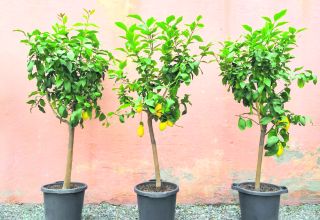
Andrew Lancaster is a weather historian and lover of folklore. He is also a passionate gardener and looks at the magical qualities June brings with it.
There is one day of the summer which I love more than any other.
It is always a day in mid-June, around the summer solstice and the 21st. The sun will be shining, and the day is so special because this is the day when the sun is literally straight above you and giving the most wonderful light.
It has a magical quality and a nostalgic one as it will be a long time before the light is exactly like this again. The June garden is new and yet full and rather like the sun itself is at the height of its powers. The roses know there will never be a better moment and they are everywhere, up walls, climbing over pergolas and leaning out from borders.
According to the Met Office the hours of daylight reach a peak in June. In Penzance, on the longest day, there will be around 16.14 hours of daylight. That is a lot of gardening hours should you need them.
June is rarely very warm. However, the hottest day of the year falls in June about 25 per-cent of the time (about the same as August). June is the only month that has not shown any warming trend during the last three centuries. Indeed, June seems to have become duller and wetter.
During June, we would expect to see an average of 73.4 mm of rainfall. Across the UK, June has more rainfall than May but less than July and August. In summer, most rain evaporates before it reaches plants. The amount of water that will soak up during a downpour depends on how dry the soil is. If it is already wet, the soil will be able to soak up more water. Plants use about 25 mm of water every week or so, therefore in June, the soil water reserves begin to reduce.
June temperatures allow you to sow vegetable seeds direct into the soil, where they will quickly germinate, and yield crops you will be able to enjoy this season. Salads such as radish, spring onion and lettuce are particularly successful sewn this way. Try planting colourful flowering perennials, biennials and hardy annuals too. Prepare weed-free beds that have been forked and raked.
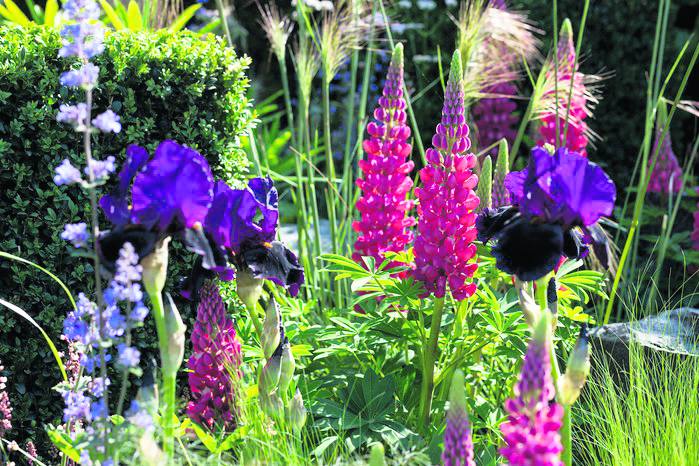
Is it too late to plant things in June?
You may be forgiven for thinking that June is too late for planting. The busiest season for getting seeds and young plants may have passed, but there is still plenty of the growing season left to enjoy! It is only in early May that gardens are generally considered ‘safe’ from frosts.
There’s still time to grow runner beans and french beans — sow them directly in the ground now. Sow beetroot thinly, directly into the ground. Sow broccoli and calabrese now in a nursery bed, for transplanting later on, or sow directly in your vegetable plot.
Midsummer’s Day
Midsummer’s Day is full of magic and with it comes a couple of pieces of weather-related folk lore. Until the change from the Julian to the Gregorian calendar in 1752 when Britain ‘lost’ 11 days, St Barnabas Day, now 11th June, fell on or close to midsummer as the traditional rhyme in the mid 17th century attests.
‘The longest day and the shortest night
When St Barnabas smiles both night and day
Poor ragged robin blooms in the hay’
Ragged robin is an old meadow plant and the reference is that weeds are still growing in the hay in June. Haymaking was a crucial day in the agricultural calendar and St Barnabas Day was traditionally the first day of haymaking and as the saying went ‘On the day of St Barnabas put the scythe to the grass’.
The strength of the sun on Midsummers Day was thought to imbue herbs with healing powers and this was the day they were traditionally gathered, at dawn.
Later in the month on the 25th St John’s Day became the traditional day to celebrate mid-summer.
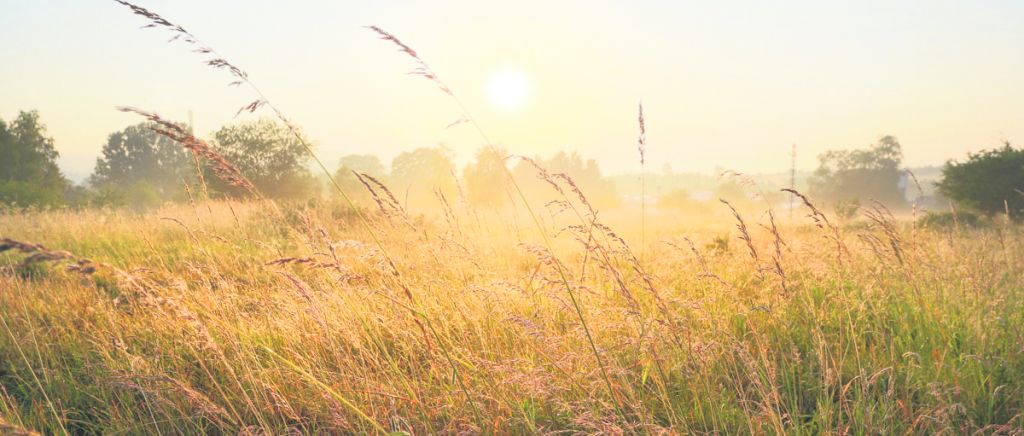
June and the sun
The summer solstice falls at 21.50 on 20th June. This is the moment the sun is above the Tropic of Cancer the northernmost latitude at which it can be directly overhead. The word solstice comes from the latin solstutium meaning ‘sun standing still’ and is related to the position of sunset and sunrise on the horizon. Both points have been heading north day by day and will now appear to pause before setting off to the south again.
June and folklore sayings.
June has more than most when it comes to weather folklore sayings
- June, damp and warm, does a farmer no harm.
- A good rain in June sets all in tune.
- A wet June makes a dry September.
- If it rains on the feast of St. Medard (8th June), it will rain forty days later; but if it rains on St. Prottis (19th June), it will rain for the next forty days.
- Rain on St. Barnabas’ Day (11th June) is good for grapes.
- If St. Vitus’s Day (15th June) be rainy weather, it will rain for thirty days together.
- If it rains on 27th June, it will rain for seven weeks.
June in the greenhouse
- Make the most of your greenhouse and prepare for sunny days by:
- Opening greenhouse vents and doors on warm days.
- Applying shade paint to the outside of the glass or using blinds on sunny days.
- Damping down the floor on sunny days, to increase humidity levels. This promotes plant growth and a reduced the risk of pests and mites.
- Allow greenhouse plants more space as they grow, to prevent disease and to avoid early pest infestations spreading.
- Check plants regularly, and seedlings daily and if they need watering, use rainwater or recycled water wherever possible.
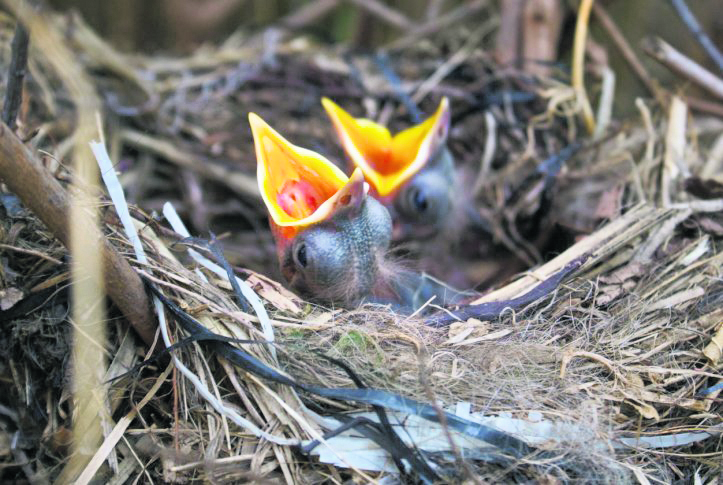
Wildlife in June
Born naked and blind bird chicks are entirely helpless but their wide-open mouths are there for dropping insects, worms and caterpillars into and it isn’t long before the chicks grow feathers and start to see – resembling the birds they actually are. In June parent birds use every second of daylight to keep their little ones fed. Letting aphids, caterpillars and other tasty grubs remain on your garden plants means more food in the bellies of the chicks.
After hatching in the spring, many chicks will now be leaving the safety of the nest. They’ll take a leap of faith, either flying high or fluttering to the ground. Remember to keep your eyes peeled for these balls of fluff in your garden and when visiting wildlife hotspots. They may look helpless, but leave them be! Parents will be keeping a beady eye on their chick’s progress until they gain full independence.
The soaring kestrels
Gentle, steady winds make June a perfect time for kestrel fledglings to take to the air, learning the art of ‘windhovering’ over meadows of long grass, full of tasty voles. Kestrels generally prefer open habitats like grassland, farmland and heathland, but can also be spotted in towns and villages. You can identify them by spotting them hovering with their pointed wings held out. They have the ability to keep their heads still while hovering like this – even in strong winds – helping them to pinpoint their prey by sight.
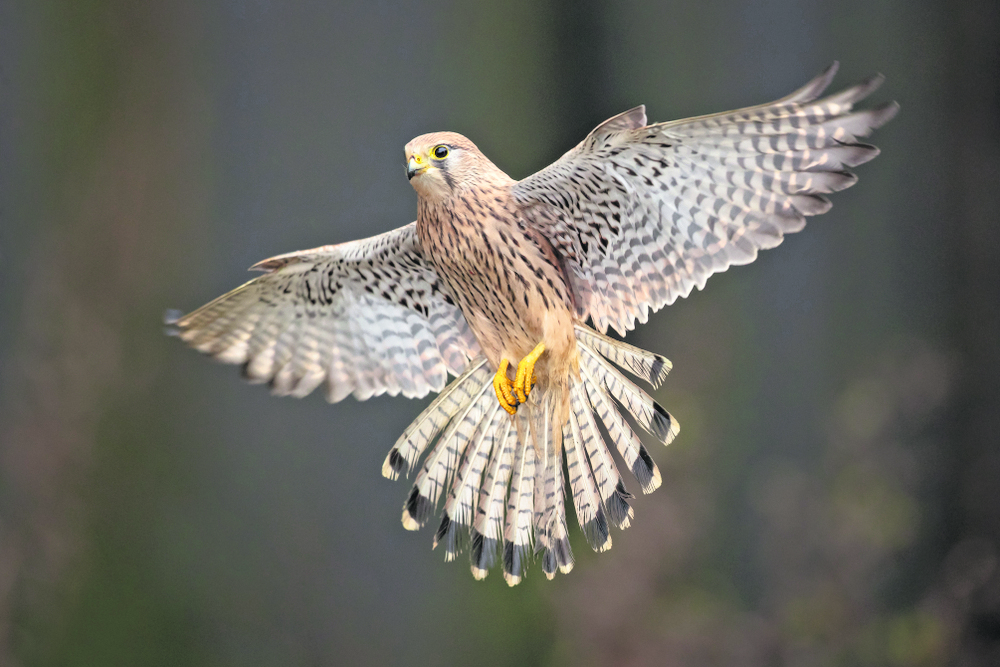
Night riders
June not only marks the appearance of baby birds, but bats, too! The summer nights may be shorter, but they’re alive with activity as bats swoop through the air hunting insects that swarm under moonlight. The warmer weather also means females will gather in large numbers to form maternity roosts before giving birth. Welcome bats into your garden or green space by having a variety of insect-tempting flowers.


